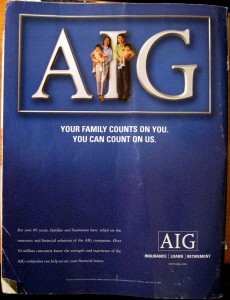Training people to quantify risks
In the October 29, 2009 edition of Nature (available online only to subscribers), writer Michael Bond considered whether members of the general public could benefit from specialized training so that they could better appreciate risks. Believe it or not, there's a controversy in this field. According to Bond, many specialists think that the public "will never really be capable of making the best decision on the basis of the available scientific information." This pessimistic position advocates that risk-related decision-making should be conducted by paternalistic expert agencies, which should nudge people into making better decisions without educating them deeply as to why they should make the choices they are being encouraged to make. A classic example is changing the default on one's driver's license with regard to whether one would like to donate one's organs after death. Making the default that one will donate one's organs unless the box is checked dramatically increases those who participate in the program. The optimistic camp is represented by a variety of experts, including psychologist Gerd Gigerenzer, who advocates that "people can be taught to improve their decision make and skills." As the Nature article points out, poor decision-making is ubiquitous and it seriously undermines the well-being of people. When faced with unfamiliar emotion-fraud situations, "most people suspend their powers of reasoning and go with an instinctive reaction that will often lead them astray." Bond gives the examples of people refusing to get vaccinations for measles-mumps-rubella, and the unjustified fear many people have with regard to genetically modified crops. He also mentions the statistical deficiencies of healthcare providers, an issue I discussed in an earlier post. We still get all exercised about snakes, even though we rarely encounter them, but we ignore such things as peak oil and the danger of getting into automobiles. Why do people have such a hard time evaluating risks?
The problem, as many researchers in cognitive neuroscience and psychology have concluded, is that people use two main brain systems to make decisions. One is instinctive--it operates below the level of conscious control and is often driven by emotions. The other is conscious and rational. The first system is automatic, quick and highly effective in situations such as walking along a crowded pavement, which requires the near-instantaneous integration of complex information and the carrying out of well-practiced action. The second system is more useful and novel situations such as deciding on the savings plan, which calls for deliberate analysis. Unfortunately, the first system has a way of kicking in even when deliberation would serve best.Gigerenzer argues that proper education and training could assist people to put the rational system in charge of the instinctive one. He claims that even one half-hour of training in statistics significantly improves people's ability to quantify risk. Bond lists several promising methods for improving critical thinking. One method is to train people to look at problems from an outsiders’ perspective. Another is training them to weigh multiple options simultaneously rather than looking at options one at a time. Another trick is to use "actively open-minded thinking," which requires people to intentionally consider more than the first conclusion that comes to their mind. How important is it that people learn better how to evaluate risks? In addition to the examples cited at the top of this article, research suggests that people who suffer from innumeracy overestimate the likelihood of terrorist attacks. They "tend to have a high body-mass index and tend to be poor at managing their own health." Those who believe that people can be trained to better appreciate statistics believe that people need to be taught to better "feel the numbers." They need to use real-life situations to illustrate the statistics. Many students don’t receive any training in statistics at all. In fact, your article mentions that only one law school in the United States requires a course in statistical thinking. This means that many judges and lawyers are not properly prepared to assess risks in our modern world. Younger students are neglected too. They are only taught the mathematics of certainty (such as geometry and trigonometry), not the mathematics of uncertainty. Bond’s article concludes with the suggestion that we now have a society of people who don't understand that they don't understand. He argues that society would see long-term benefits if we would only stress the need for a rigorous education in the statistics of risk.



